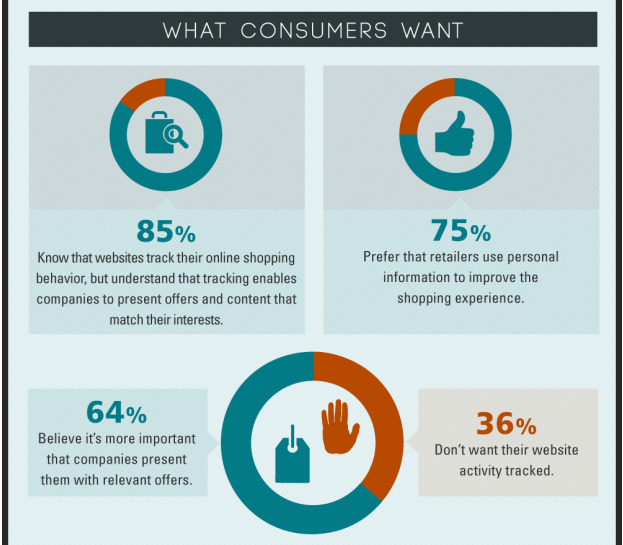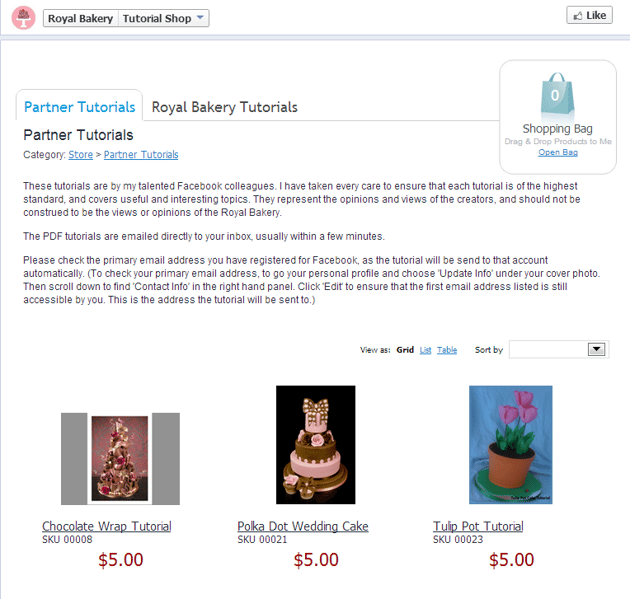3 Ways to Cater to Digital Customers in 2014

As the Web progresses, the expectations of digital consumers keep growing. Not only is it vital for merchants to offer personalized shopping experiences nowadays, but they must also make their products available to consumers in a variety of channels.
In order to obtain the best return on investment (ROI) from commerce initiatives in 2014, merchants must do a better job catering to their virtual shoppers' wants and needs. Luckily, the multitude of technology available on the 'Net can make it easier for merchants to give shoppers exactly what they want. Read below to discover three strategies merchants can leverage in the New Year to satisfy their customers' growing expectations:
1. Get Personal.
According to Monetate, 75 percent of customers prefer retailers to use personal information to improve the shopping experience (see image). One simple, yet effective, way that merchants can personalize the shopping experience is with product recommendations. RichRelevance, for example, offers a Recommendations platform that helps merchants deliver shopper-specific product recommendations across any channel based on past behaviors. Plus, the platform enables merchants to leverage multivariate testing tools to test different layouts and merchandising strategies with live shoppers.
Offering product recommendations, however, is only the tip of the iceberg when it comes to personalization strategies. In fact, merchants can launch personalized ad campaigns by leveraging retargeting platforms like AdRoll or Retargeter. By doing so, merchants can serve personalized ads featuring previously viewed or recommended products to customers around the Web. In addition, email campaigns can be personalized with technology like Skymosity. This platform enables merchants to create automated triggered email messages for immediate or forecasted weather conditions. For instance, if there is a snow storm in the forecast, merchants could leverage Skymosity to send a message to subscribers about a sale on snow boots and mittens.
Discover more ways to personalize the digital customer experience with Website Magazine's "20 Wonderful Web Personalization Tools for Merchants."
2. Enable Shopping Across Channels.
In today's mobile world, consumers want to be able to make purchases from anywhere and everywhere, including from their smartphones and on social networks. According to Jim O-Hara, president of Ecwid, this trend is referred to as distributed commerce. Essentially, distributed commerce enables consumers to purchase products wherever they happen to be browsing or shopping. This concept is expected to disrupt the traditional ecommerce model in 2014.
"What we do know is that consumers are expecting the ability to shop in context as well as where they are discovering products that interest them," said O-Hara.
One way merchants can implement a distributed commerce strategy is by enabling social shopping (see image). Platforms like Ecwid and Wishpond for example, enable merchants to create an ecommerce store on their Facebook profiles. In addition, merchants can enable consumers to shop from Instagram with the Soldsie platform, which allows consumers to make purchases from the comment section of certain social networks.
Aside from social, merchants should implement a mobile commerce strategy. Not only is it essential to have a mobile site and app that allow customers to make purchases directly from their smartphones and tablets, but merchants can also implement other mobile technology, such as mobile deep linking platform Sparq. Sparq enables businesses to link directly to apps from any form of marketing. For instance, if a mobile consumer clicks on a Sparq product link from a retailer's ad campaign, Sparq will detect if the consumer has the retailer's app downloaded. If they do, Sparq will automatically open up the app and bring them to the exact product page they were looking for. This streamlines the discovery process and increases the chances that the consumer will make a conversion.
3. Be Engaging.
Last but not least, merchants need to create an engaging experience in order to keep their digital customers coming back. This can be done by implementing interactive technology like virtual fitting rooms or gamification platforms.
Virtual fitting room technology like Fits.me and Truefit, for example, not only engages consumers, but can also increase conversions and decrease returns. This is because these types of platforms allow customers to "virtually" try on apparel from their computer screen. In doing so, customers can see how items would appear and fit on their body type so they can make better, and more confident, purchasing decisions.
That said, loyalty and gamification programs can also impact site and brand engagement. This is because both types of programs can be used to incentivize user actions, which makes visitors more active on a website and thus, more likely to purchase from the brand. Gigya, for instance, offers a Gamification solution that can improve consumer loyalty by rewarding customers with points, badges and special offers. In fact, gamification is so influential that Gartner reports more than 70 percent of the world's largest 2,000 companies are expected to deploy at least one gamified application by year-end 2014.
Putting Your Best Foot Forward
As the world becomes more connected to the Internet, digital shoppers' expectations will continue to grow, and the merchants that work hard to meet those expectations are sure to succeed in 2014. Those who don't, however, stand to lose revenue to the competition. After all, the next ecommerce store is just a click away.











